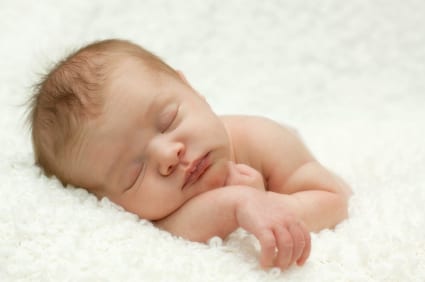 After giving birth, I suggest my clients bring their baby to see an osteopath for cranial sacral therapy. I have been seeing Dr. Payam Hakimi for years now and highly recommend him to all of my new mothers. Dr. Hakimi is the medical director at Body of Harmony in Beverly Hills. He practices Integrative Medicine [individualized combination of western medicine and alternative medical therapies] using his knowledge and experience as a Family Physician, Doctor of Osteopathy, and Clinical Homeopathy.
After giving birth, I suggest my clients bring their baby to see an osteopath for cranial sacral therapy. I have been seeing Dr. Payam Hakimi for years now and highly recommend him to all of my new mothers. Dr. Hakimi is the medical director at Body of Harmony in Beverly Hills. He practices Integrative Medicine [individualized combination of western medicine and alternative medical therapies] using his knowledge and experience as a Family Physician, Doctor of Osteopathy, and Clinical Homeopathy.
I had the chance to ask him a few questions on why it is important for your child to have these treatments done after birth. Here’s what I learned:
What is an osteopath?
In the United States, Doctors of Osteopathy [D.O.] are traditional medical doctors with additional training in structural integration of the body. Most DO’s practice western medicine, as do their MD counterparts. Only about 3-5% of DO’s practice the art of structural manipulations – or osteopathy. Outside of the United States, Osteopaths do not go through medical training and thus only use manipulation as treatment.
One of the tenets of Osteopathy is the relationship between structure and function. Structural trauma (lesion) can create restrictions in motion and flow (dis-ease) which cause physiological changes. Removing the structural restrictions re-establishes normal flow and optimal health.
After medical and structural evaluations, Osteopaths employ a variety of manual technics to release structural tension and misalignment, improving the flow of nerve impulses, blood, and lymph to the affected tissue.
What is cranial sacral therapy?
Cranial Osteopathy (a.k.a. cranio-sacral therapy or cranial sacral therapy) applies the Osteopathic principles to the cranial bones to ascertain their inherent mobility.
Different parts of the brain are involved in processing and controlling specific bodily functions. Electrical activity in the brain is organized by chemical stimulation of neurotransmitters and hormones. Abnormalities can result if there is too much or too little of these chemicals or oxygen, nutrients, and waste products in any part of the brain. For example, sleep issues are related to the abnormality of the movements of occipital bones, which encase the Reticular Activating System (command center for sleep and wake cycle) of the brain.
Why is it important for your child to have a treatment after he/she is born?
Natural process of birth is important since the contractions of the uterus and the force of the pelvic bones create an opportunity to help the newborn clear amniotic fluid from the sinuses, lungs, and guts. However, due to the structural and physiological issues the of birth canal, C-sections, vacuums or forceps, stress is exerted on the structure of the newborn.
Although the body’s natural tendency towards health resolves most of these issues over time, this process can lead to an uncomfortable child. Of these issues, some have been researched and proven to benefit from the use of cranial osteopathy and others have been treated experientially: problems with latching, suckling, feeding, and reflux, colicky pains, ear infections, poor sleep, irritation and behavioral issues, craniosynostosis and other face and jaw abnormalities and molded head, torticollis and neck movement issues, cerebral palsy, shoulder dystocia, abnormalities of the spine and rib cage and hips, leg length discrepancy, and any other structural abnormalities.
How can it help with the newborn’s development?
Babies grow through the development of their structure, nervous system, senses, and organs. A colicky baby or one who has chronic ear infections which are treated by multiple rounds of antibiotics can have problems with yeast overgrowth, allergies, eczema, and failure in physical growth. This can even lead to issues with speech and learning disabilities as the child ages.
The earlier these problems are resolved, the less stress will be placed on the newborn’s body.
When is the best time to see the DO?
It is recommended that all newborns receive an Osteopathic evaluation as soon as possible. Some parents plan for their newborn to be seen during the first 24 hours after birth or as soon as any issues are noticed.
The first years of life are about structural and physiological growth – learning to stand, walk, and run. Falls and head bangs can introduce a torsion in the structure of the body or cranium which may result in other issues in the future like scoliosis, growing pains, constipation, enuresis, and short-leg syndrome. Plan check-up visits when the baby is one month, three months, 6 months, 1 year and 2 years old to make sure there is normal structural growth.
For more info about Dr Hakimi, visit: www.bodyofharmony.com or contact him at dr.hakimi@bodyofharmony.com.





